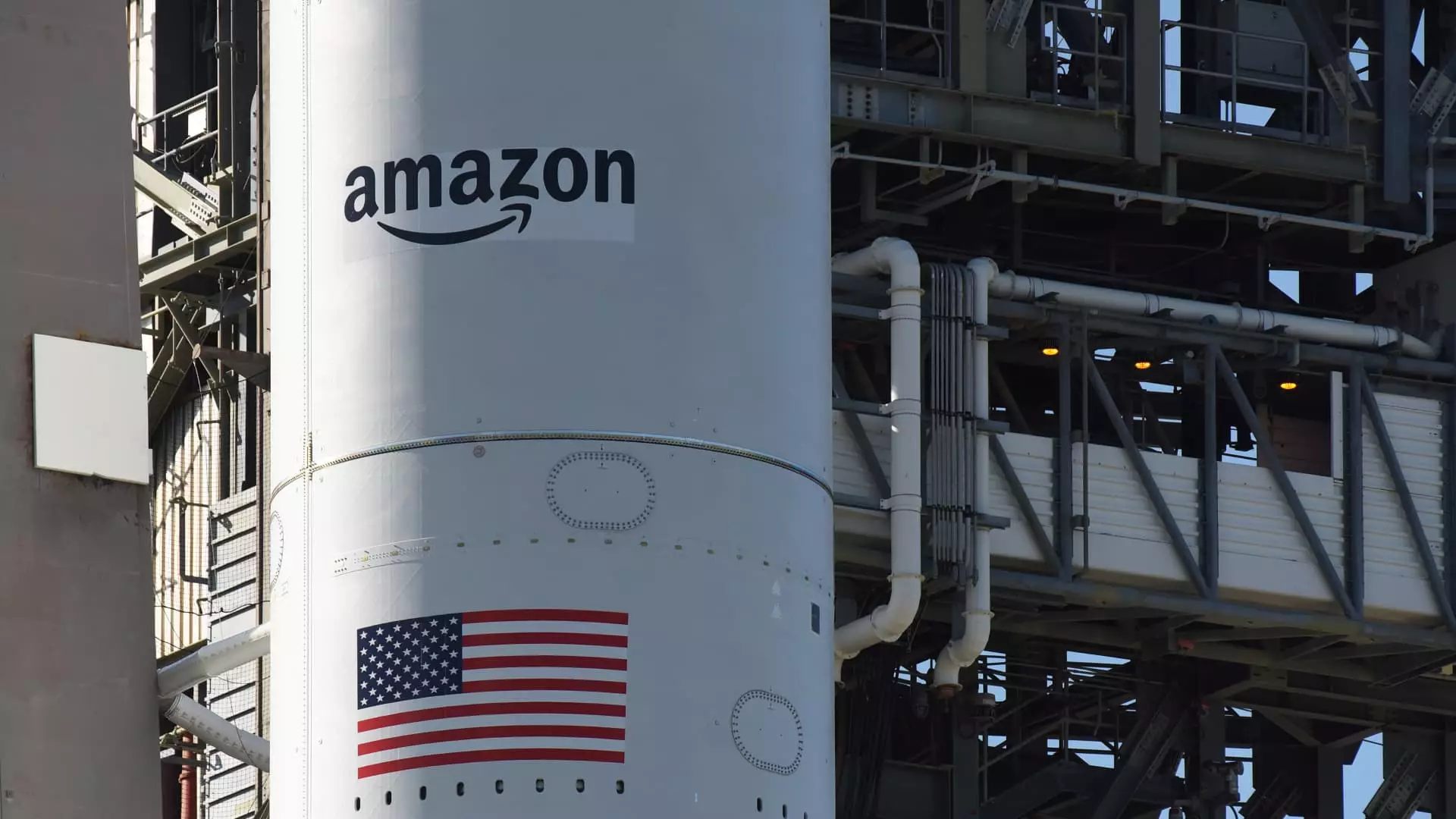When a company like Amazon sets its sights on revolutionizing internet access through satellite technology, the world watches with bated breath. However, the recent delay of Amazon’s Kuiper internet satellite launch due to “stubborn cumulus clouds” and heavy winds exemplifies a harsh reality of space ventures—nature has its own agenda. Scheduled to take off from Cape Canaveral, Florida, a United Launch Alliance (ULA) rocket carrying 27 Kuiper satellites was simply thwarted by the elements. This is not just a minor inconvenience; it showcases the precarious nature of technological advancement. We live in an age where ambitions soar high, yet we remain grounded by unavoidable contingencies.
This disruption isn’t merely a setback for Amazon; it represents a tangible hurdle in the fierce competition with SpaceX’s Starlink, which boasts an enviable fleet of 8,000 satellites. For Amazon, the stakes couldn’t be higher as it tries to carve out its niche in an already competitive arena. With an eye on expanding internet accessibility for consumers, corporations, and governments alike, missing a launch window can sideline their ambitious timeline. The urgency is palpable, especially given the looming deadline imposed by the Federal Communications Commission (FCC). It mandates that Amazon must launch half of its planned constellation by July 2026.
Corporate Race Against Time
The market is unforgiving. While other companies quickly adapt and innovate, Amazon finds itself sprinting to catch up in a fast-paced race. The Kuiper project, unveiled six years ago, was framed as a monumental leap toward providing high-speed internet to underserved communities. With commercial service projected for later this year, the anticipation is intense, yet how can anyone launch successfully if the elements don’t comply? The dependency on favorable weather adds an extra layer of tension, reminding us that, despite immense technological resources, control ultimately lies beyond human grasp.
Meanwhile, Elon Musk’s SpaceX has deftly maneuvered through such challenges, leveraging its public-private relationships to secure its dominance. Musk’s presence in the White House as an advisor overseeing governmental efficiency emphasizes a troubling intertwining of corporate and political interests. This position not only solidifies SpaceX’s footprint but raises questions about Amazon’s strategy. Can Amazon shift public perception in the wake of these delays? Will it take aggressive steps to pivot? Consumers are not merely passive observers; they’re expectations-driven entities who will not hesitate to switch allegiance if the wait continues.
The Future of Competition and Innovation
As the clock ticks towards the FCC’s deadline, Amazon’s focus on ramping up production and deployment capabilities is commendable but fraught with uncertainty. It’s evident that the company has already mobilized resources for subsequent missions, counting on the reliability of ULA’s Atlas V rockets. However, within this whirlwind of activity lies a critical question: Is this frenetic pace of innovation sustainable? If Amazon can navigate these turbulent waters effectively, the payoff could be massive—expanding access to those who desperately need it.
Ultimately, the Kuiper satellite constellation represents more than just a corporate venture; it symbolizes the broader struggle for equitable technology and internet access. In an age where digital connectivity shapes economies and enriches lives, delays and setbacks take on a weightier significance. While Amazon’s ambition is commendable, the path to achievement is riddled with hurdles that could determine the future of connectivity for millions. The real question is—can they navigate the inevitable disruptions of the universe? Time will tell, and it’s a race that needs to be watched closely.


Leave a Reply